And there were before me clouds, each standardized in size, fabric, and form. Conches, brass, and concrete flutes sung out from the clouds with sounds of ancient patterns and rumbling bass. They were awaiting the conductor, who would instruct them on when to timely deliver the rain and news in sync with reason, cadence, and China shipping logistics schedules. Then I felt the touch of a man, clad in all leather, dancing right next to me. He informed me that he was a bookie and showed me what was to happen to them. This is what I saw and heard. It was controlled, it was whole, and it was good.(1)
The Back of Atlas
Despite the imagery of a grey-blue sea, the looking and listening experience of Julien Grossmann’s installation Marine Affairs transported me to a warm tub, bathed by the calm voice of a man reading out what seemed like an endless list of names for the latent decisions of maritime regulation. The man’s voice was carried along by ebbing and flowing music, while new images appeared from time to time, deformed by the moving surface of the water projected onto the screen in front of me; images of negotiating government officials whose faces were morphing, or images of modern-day pirates. They stayed for a while before fading back into the depths of the ocean’s waters. I was reminded of how I felt when I first listened to Brian Eno’s Music for Airports – suspicious, wondering why this music wanted to put me in a state of calm and relaxation. The music composed by Grossmann was not conceived for a specific place, but for a much broader context – the ocean, who on its beautiful blue Atlas back carries along ships transporting their anonymous containers. Still, I remained distrustful of the siren-like music.
Water and air, as commons, were never intended to be permanently contained or even delineated, as they are always in a state of flux, inherently transgressing any notion of the private. And yet, projected onto the screen in Grossmann’s work is an oscillating square, possibly the area inside the cross-sections of two meridians and parallels. It is here, through this graphed “slice” of an ocean and the never-ending list of names and titles, that I realize the insatiable desire of man to conquer, control, and order. To be suspicious of the hypnotic, soothing imagery and music in Marine Affairs therefore seems appropriate, as one wonders if the artist confronts us with our own sleepiness in the face of anonymous systems, or if he acts as an omniscient storyteller who shows us the way things will be, as though projecting a prophecy onto images of the way things are.
Surface Shifts
Human-designed systems (laws, infrastructure, language, networks, social codes, etc.) order our world, historically growing in complexity and reach, so that our lives become easier, on-time, less lonely and more fun. And it’s true. Or at least “over here,” it’s mostly true. These man-made systemic influences have been theorized as a new geological epoch called the Anthropocene.(2) The Anthropocene posits that human beings have been changing the world to such an extent that what we still perceive as nature is no longer “wild” but controlled by man and overlaid with complex systems. When Grossmann shows us a delimitated area of the ocean’s surface, he presents it to us the way lawmakers and politicians might see it, namely, as an object of negotiation on which to project control in the form of limits or laws – in some regards, a manifestation of the Anthropocene.
Grossmann’s work evidences his attention to the cultural shifts and political movements shaping our lives, more specifically through their interactions with the aforementioned systems. As in Marine Affairs, there often seems to be an intentional use of the surface, through which he subtly reveals systems whose effects might not be immediately visible or tangible. This is also true for Tropical Race (TR4), a massive color print on Tyvek, whose main motif appears at first to be a large, semi-transparent, floating or flying object composed of thousands of banana stickers, each unique.
Collecting implies to actively go out and find; it denotes an act of gathering for hobby or study purposes, or for the retrieval of money owed. As the offspring of abundant societies, we own too much, and so it is only natural that each of us collects in line with our own idiosyncrasies. Some people collect pictures of Kim Jong-Il looking at things; I happen to collect mosquitoes; and for Tropical Race, Grossmann collected over ten thousand different banana stickers. Each sticker is like a thumbnail-sized flag; as a whole, they suggest that each of them represents a particular species of banana, in the same way a flag represents a different language, identity, and culture. However, that’s far from the current reality, as the vast variety of stickers essentially illustrates the brands of the many exporters and their designs. Yet underneath them all lies the same “good,” the same banana: the Cavendish. For the last sixty years, the Cavendish has been the “lucky” banana selected for production and export – not for its taste, which is considered to be comparatively bland, but because it survived the last bout of devastation by disease in the 1950s, which wiped out the previously dominating species. All good things must come to an end, even for the Cavendish, whose retirement must come, just as it did for its predecessor, the Gros Michel banana – and for audio cassettes, Frank Sinatra, and Gérard Depardieu.
Perhaps it was when considering the threat of another devastation that Grossmann decided to “sculpt” the image of a zeppelin out of facsimile stickers, assuming that the printed sculpture would be associated with the “Hindenburg” catching fire in 1937. Incidentally, images of the burning balloon caused such a level of fear in the public that its fatal accident forever put an end to airship travel. To the unassuming, Grossmann entitled his floating and harmless zeppelin, Tropical Race – a term most spectators are likely to associate with a competition rather than a widespread banana plant disease. Beyond the ordered surface of ornately composed stickers, Tropical Race shifts the gaze to an unseen essence – the essence of mono, as in “monoculture.” The prefix mono- is derived from the Ancient Greek word for “single.” In Tropical Race, however, it does not refer to a kind of singularity born out of a unified diversity (e pluribus unum);(3) rather, it is a singularity akin to a movement or ideology, where in order to belong or become a member, one must adhere to certain forms and conditions, one must adapt, change, and conform, one must “become like.” This is a possible narrative within the surface of the stickers, which want to be seen as a unity that has formed out of diversity, while in fact this diversity is a mere façade. Once the essence of the term mono is revealed, understood, and extended beyond commodities and goods to other, immaterial areas of production, such as music, visual arts, or language, we are able to envision potential outcomes for us as a society. (4)
Beyond the ordered surface of unique and ornately composed stickers, Tropical Race shifts our gaze to an un-seen essence in the work; an essence of the mono. A mono–poly–lyte–graphy-culture. Mono is a Greek numerical pre-fix representing anything singular. However, the presence of the singular mono in Tropical Race is not a type of singularity that’s born out of a unified diversity (E pluribus unum) (3). Mono is a singularity that is like a movement or ideology, where in order to belong or become a member one must adhere to the forms and conditions; one must adapt, change and conform; one must become like. This is a possible narrative within the surface of the stickers, who want us to see that they are a unified Zeppelin force, formed out of diversity, but where in fact their diversity is a façade. Once the mono (4) is truly seen, understood, and extrapolated beyond commodities and goods to other production arenas, such as immaterial production, or music, the visual arts, and language, are we then able to envision potential outcomes existing for us as a society.
Outside Movements
Movement, be it for travel or music, must have time, duration, wave, and rhythm to exist, giving it the potential to transport. Movements are the prominent and “hidden” layers embedded in so many of Grossmann’s works, where they serve to explore geographic portraits and cultural territories – not just on a visual but also on a musical level, with sound, recorded and played back to us from the position of the outside, acting as a form of transportation.
Being on the outside today has a different meaning than it did fifty years ago, when the earth was seen as the “blue planet” for the first time.(5) This event evidenced mankind’s globality and connectedness, which, in turn, sparked a desire to remove the barriers of separation or segregation and unify. Today,we know that we’re global and connected – maybe even to too many systems and friends; we know that the goods and services we buy are imported; and we know that marketing our individuality will help us to succeed and survive, this being especially true for artists.
Zooming into an economic-urban system, Flukes is a recent project by Grossmann, where one facet of the work is an investigation into vertical integration. In microeconomics, vertical integration is a system in which a company owns its supply chain. In 1870 there was Carnegie Steel, then came Apple and Alibaba, and today Flukes.(7) For this installation, created during a residency in Yamaguchi, Japan, the artist controlled both the sourcing of the material and the immaterial production processes behind the work. He carved out of bamboo six flutes, which he then cast in concrete at the local plant of a multinational company (Ube Industries), which also quarried the limestone used to make the cement for the project. Finally, he played and recorded the concrete flutes as the soundtrack for his work. But why not play and record the carved bamboo flutes? Why use cast concrete, and not blown glass or cast iron?
Concrete is associated with rapid urbanization; it is as much a socialist material for building equal housing as it is a capitalistic material that drives growth and brings down costs. Where there is concrete, there is pounding, hip-hop, and cars. Flutes, on the other hand, are among the first instruments invented by man, historically carved from natural materials such as wood or bone; they are associated with calm, nature, and ancient civilizations.(8) Where there are flutes, there are birds and myths, and wars stop. The combination of a peaceful instrument with an urban material appears less unlikely when considering that many of Grossmann’s works revolve around narratives of a globalized world and translocated cultures and histories. By creating a musical piece where urban beats are played on concrete flutes, he cuts through the narratives we expect from a flute or from concrete and destabilizes both of them.
The images of delineated waters, the fragile depiction of a monoculture, or concrete flutes that resemble excavated artifacts tell us something about our society in that they reflect various underlying aspects. Grossmann’s approach is not restricted to a fictive, personal, or self-designed narrative; his is a broader narrative, told from the outside, which shows us how one system or one history has morphed into another. By doing so, he enables us to understand the difference between ideas and their effects in reality.
Ideas are like weather maps, and in much of his work, Grossmann essentially translates the shifts occurring through the Anthropocene. Using a form of aeromancy,(9) he takes us beneath the neatly manicured surface of man-made systems and reveals their essential fragility and vulnerability.
__
(1) This original prose was inspired by Micah Silver, Figures in Air: Essays Toward a Philosophy of Audio, speci cally the historical photographs and descriptions of sound and audio systems placement and use, from vaudeville to disco; Julien Grossmann’s work The Drift (2012), a mixed media installation, more speci cally the music he composed for brass instruments and conch shells, and their role as cultural and time-mapping objects; the ticking sound in Grossmann’s work Just Checking (2013); the writing of the Apostle John when he describes visions of the future in the Book of Revelation; and, nally, the experience of living near the harbour in the cloudy port city of Rotterdam.
(2) www.en.wikipedia.org/wiki/Anthropocene and www.anthropocene.info/great-acceleration.php, accessed 20-Feb-2016
(3) E Pluribus Unum is Latin for “out of many, one.” It is the motto that appears on the Seal of the United States and on coins.
(4) nterestingly, the frequency of use of the word mono in the English language (based on books scanned by Google) has increased more than eightfold, from 0.000018% to 0.000175%, in the two hundred years since the Industrial Revolution. In comparison, the word shoe has a use rate of 0.0005% and has remained stable (between 0.0005% and 0.0007%), with increases in periods of progress.
(5) http://www.e-flux.com/journal/the-whole-earth-in-conversation-with-diedrich-diederichsen-and-anselm-franke/ https://www.youtube.com/watch?v=Y1hS1pwInY8 - Interview between Bernd Scherer and Anselm Franke https://www.youtube.com/watch?v=utF6DGfBsfM - Interview between Bernd Scherer and Diedrich Diederichsen
(6) This notion was recently discussed and investigated in the exhibition The Whole Earth: California and the Disappearance of the Outside, curated by Diedrich Diederichsen and Anselm Franke.The project’s starting points were two NASA photographs of the earth seen from outer space,taken in 1968 and 1972 respectively.These images placed man rmly on the outside, which, the curators argue, led to a period of interiorization. See http://www.e-flux.com/journal/the-whole-earth-in-conversation-with-diedrich-diederichsen-and-anselm-franke/, https://www.youtube.com/watch?v=Y1hS1pwInY8 (interview between Bernd Scherer and Anselm Franke) and https://www.youtube.com/watch?v=utF6DGfBsfM (interview between Bernd Scherer and Diedrich Diederichsen).
(7) A play on the word fluke, which refers to a lucky or improbably occurrence, and the flute, a musical wind instrument.
(8) To this list could be added the venerable Jethro Tull and Ron Burgundy.
(9) Aeromancy is the prediction of future events based on the observation of weather conditions.
The Back of Atlas
Despite the imagery of a grey-blue sea, the looking and listening experience of Julien Grossmann’s installation Marine Affairs transported me to a warm tub, bathed by the calm voice of a man reading out what seemed like an endless list of names for the latent decisions of maritime regulation. The man’s voice was carried along by ebbing and flowing music, while new images appeared from time to time, deformed by the moving surface of the water projected onto the screen in front of me; images of negotiating government officials whose faces were morphing, or images of modern-day pirates. They stayed for a while before fading back into the depths of the ocean’s waters. I was reminded of how I felt when I first listened to Brian Eno’s Music for Airports – suspicious, wondering why this music wanted to put me in a state of calm and relaxation. The music composed by Grossmann was not conceived for a specific place, but for a much broader context – the ocean, who on its beautiful blue Atlas back carries along ships transporting their anonymous containers. Still, I remained distrustful of the siren-like music.
Water and air, as commons, were never intended to be permanently contained or even delineated, as they are always in a state of flux, inherently transgressing any notion of the private. And yet, projected onto the screen in Grossmann’s work is an oscillating square, possibly the area inside the cross-sections of two meridians and parallels. It is here, through this graphed “slice” of an ocean and the never-ending list of names and titles, that I realize the insatiable desire of man to conquer, control, and order. To be suspicious of the hypnotic, soothing imagery and music in Marine Affairs therefore seems appropriate, as one wonders if the artist confronts us with our own sleepiness in the face of anonymous systems, or if he acts as an omniscient storyteller who shows us the way things will be, as though projecting a prophecy onto images of the way things are.
Surface Shifts
Human-designed systems (laws, infrastructure, language, networks, social codes, etc.) order our world, historically growing in complexity and reach, so that our lives become easier, on-time, less lonely and more fun. And it’s true. Or at least “over here,” it’s mostly true. These man-made systemic influences have been theorized as a new geological epoch called the Anthropocene.(2) The Anthropocene posits that human beings have been changing the world to such an extent that what we still perceive as nature is no longer “wild” but controlled by man and overlaid with complex systems. When Grossmann shows us a delimitated area of the ocean’s surface, he presents it to us the way lawmakers and politicians might see it, namely, as an object of negotiation on which to project control in the form of limits or laws – in some regards, a manifestation of the Anthropocene.
Grossmann’s work evidences his attention to the cultural shifts and political movements shaping our lives, more specifically through their interactions with the aforementioned systems. As in Marine Affairs, there often seems to be an intentional use of the surface, through which he subtly reveals systems whose effects might not be immediately visible or tangible. This is also true for Tropical Race (TR4), a massive color print on Tyvek, whose main motif appears at first to be a large, semi-transparent, floating or flying object composed of thousands of banana stickers, each unique.
Collecting implies to actively go out and find; it denotes an act of gathering for hobby or study purposes, or for the retrieval of money owed. As the offspring of abundant societies, we own too much, and so it is only natural that each of us collects in line with our own idiosyncrasies. Some people collect pictures of Kim Jong-Il looking at things; I happen to collect mosquitoes; and for Tropical Race, Grossmann collected over ten thousand different banana stickers. Each sticker is like a thumbnail-sized flag; as a whole, they suggest that each of them represents a particular species of banana, in the same way a flag represents a different language, identity, and culture. However, that’s far from the current reality, as the vast variety of stickers essentially illustrates the brands of the many exporters and their designs. Yet underneath them all lies the same “good,” the same banana: the Cavendish. For the last sixty years, the Cavendish has been the “lucky” banana selected for production and export – not for its taste, which is considered to be comparatively bland, but because it survived the last bout of devastation by disease in the 1950s, which wiped out the previously dominating species. All good things must come to an end, even for the Cavendish, whose retirement must come, just as it did for its predecessor, the Gros Michel banana – and for audio cassettes, Frank Sinatra, and Gérard Depardieu.
Perhaps it was when considering the threat of another devastation that Grossmann decided to “sculpt” the image of a zeppelin out of facsimile stickers, assuming that the printed sculpture would be associated with the “Hindenburg” catching fire in 1937. Incidentally, images of the burning balloon caused such a level of fear in the public that its fatal accident forever put an end to airship travel. To the unassuming, Grossmann entitled his floating and harmless zeppelin, Tropical Race – a term most spectators are likely to associate with a competition rather than a widespread banana plant disease. Beyond the ordered surface of ornately composed stickers, Tropical Race shifts the gaze to an unseen essence – the essence of mono, as in “monoculture.” The prefix mono- is derived from the Ancient Greek word for “single.” In Tropical Race, however, it does not refer to a kind of singularity born out of a unified diversity (e pluribus unum);(3) rather, it is a singularity akin to a movement or ideology, where in order to belong or become a member, one must adhere to certain forms and conditions, one must adapt, change, and conform, one must “become like.” This is a possible narrative within the surface of the stickers, which want to be seen as a unity that has formed out of diversity, while in fact this diversity is a mere façade. Once the essence of the term mono is revealed, understood, and extended beyond commodities and goods to other, immaterial areas of production, such as music, visual arts, or language, we are able to envision potential outcomes for us as a society. (4)
Beyond the ordered surface of unique and ornately composed stickers, Tropical Race shifts our gaze to an un-seen essence in the work; an essence of the mono. A mono–poly–lyte–graphy-culture. Mono is a Greek numerical pre-fix representing anything singular. However, the presence of the singular mono in Tropical Race is not a type of singularity that’s born out of a unified diversity (E pluribus unum) (3). Mono is a singularity that is like a movement or ideology, where in order to belong or become a member one must adhere to the forms and conditions; one must adapt, change and conform; one must become like. This is a possible narrative within the surface of the stickers, who want us to see that they are a unified Zeppelin force, formed out of diversity, but where in fact their diversity is a façade. Once the mono (4) is truly seen, understood, and extrapolated beyond commodities and goods to other production arenas, such as immaterial production, or music, the visual arts, and language, are we then able to envision potential outcomes existing for us as a society.
Outside Movements
Movement, be it for travel or music, must have time, duration, wave, and rhythm to exist, giving it the potential to transport. Movements are the prominent and “hidden” layers embedded in so many of Grossmann’s works, where they serve to explore geographic portraits and cultural territories – not just on a visual but also on a musical level, with sound, recorded and played back to us from the position of the outside, acting as a form of transportation.
Being on the outside today has a different meaning than it did fifty years ago, when the earth was seen as the “blue planet” for the first time.(5) This event evidenced mankind’s globality and connectedness, which, in turn, sparked a desire to remove the barriers of separation or segregation and unify. Today,we know that we’re global and connected – maybe even to too many systems and friends; we know that the goods and services we buy are imported; and we know that marketing our individuality will help us to succeed and survive, this being especially true for artists.
Zooming into an economic-urban system, Flukes is a recent project by Grossmann, where one facet of the work is an investigation into vertical integration. In microeconomics, vertical integration is a system in which a company owns its supply chain. In 1870 there was Carnegie Steel, then came Apple and Alibaba, and today Flukes.(7) For this installation, created during a residency in Yamaguchi, Japan, the artist controlled both the sourcing of the material and the immaterial production processes behind the work. He carved out of bamboo six flutes, which he then cast in concrete at the local plant of a multinational company (Ube Industries), which also quarried the limestone used to make the cement for the project. Finally, he played and recorded the concrete flutes as the soundtrack for his work. But why not play and record the carved bamboo flutes? Why use cast concrete, and not blown glass or cast iron?
Concrete is associated with rapid urbanization; it is as much a socialist material for building equal housing as it is a capitalistic material that drives growth and brings down costs. Where there is concrete, there is pounding, hip-hop, and cars. Flutes, on the other hand, are among the first instruments invented by man, historically carved from natural materials such as wood or bone; they are associated with calm, nature, and ancient civilizations.(8) Where there are flutes, there are birds and myths, and wars stop. The combination of a peaceful instrument with an urban material appears less unlikely when considering that many of Grossmann’s works revolve around narratives of a globalized world and translocated cultures and histories. By creating a musical piece where urban beats are played on concrete flutes, he cuts through the narratives we expect from a flute or from concrete and destabilizes both of them.
The images of delineated waters, the fragile depiction of a monoculture, or concrete flutes that resemble excavated artifacts tell us something about our society in that they reflect various underlying aspects. Grossmann’s approach is not restricted to a fictive, personal, or self-designed narrative; his is a broader narrative, told from the outside, which shows us how one system or one history has morphed into another. By doing so, he enables us to understand the difference between ideas and their effects in reality.
Ideas are like weather maps, and in much of his work, Grossmann essentially translates the shifts occurring through the Anthropocene. Using a form of aeromancy,(9) he takes us beneath the neatly manicured surface of man-made systems and reveals their essential fragility and vulnerability.
__
(1) This original prose was inspired by Micah Silver, Figures in Air: Essays Toward a Philosophy of Audio, speci cally the historical photographs and descriptions of sound and audio systems placement and use, from vaudeville to disco; Julien Grossmann’s work The Drift (2012), a mixed media installation, more speci cally the music he composed for brass instruments and conch shells, and their role as cultural and time-mapping objects; the ticking sound in Grossmann’s work Just Checking (2013); the writing of the Apostle John when he describes visions of the future in the Book of Revelation; and, nally, the experience of living near the harbour in the cloudy port city of Rotterdam.
(2) www.en.wikipedia.org/wiki/Anthropocene and www.anthropocene.info/great-acceleration.php, accessed 20-Feb-2016
(3) E Pluribus Unum is Latin for “out of many, one.” It is the motto that appears on the Seal of the United States and on coins.
(4) nterestingly, the frequency of use of the word mono in the English language (based on books scanned by Google) has increased more than eightfold, from 0.000018% to 0.000175%, in the two hundred years since the Industrial Revolution. In comparison, the word shoe has a use rate of 0.0005% and has remained stable (between 0.0005% and 0.0007%), with increases in periods of progress.
(5) http://www.e-flux.com/journal/the-whole-earth-in-conversation-with-diedrich-diederichsen-and-anselm-franke/ https://www.youtube.com/watch?v=Y1hS1pwInY8 - Interview between Bernd Scherer and Anselm Franke https://www.youtube.com/watch?v=utF6DGfBsfM - Interview between Bernd Scherer and Diedrich Diederichsen
(6) This notion was recently discussed and investigated in the exhibition The Whole Earth: California and the Disappearance of the Outside, curated by Diedrich Diederichsen and Anselm Franke.The project’s starting points were two NASA photographs of the earth seen from outer space,taken in 1968 and 1972 respectively.These images placed man rmly on the outside, which, the curators argue, led to a period of interiorization. See http://www.e-flux.com/journal/the-whole-earth-in-conversation-with-diedrich-diederichsen-and-anselm-franke/, https://www.youtube.com/watch?v=Y1hS1pwInY8 (interview between Bernd Scherer and Anselm Franke) and https://www.youtube.com/watch?v=utF6DGfBsfM (interview between Bernd Scherer and Diedrich Diederichsen).
(7) A play on the word fluke, which refers to a lucky or improbably occurrence, and the flute, a musical wind instrument.
(8) To this list could be added the venerable Jethro Tull and Ron Burgundy.
(9) Aeromancy is the prediction of future events based on the observation of weather conditions.
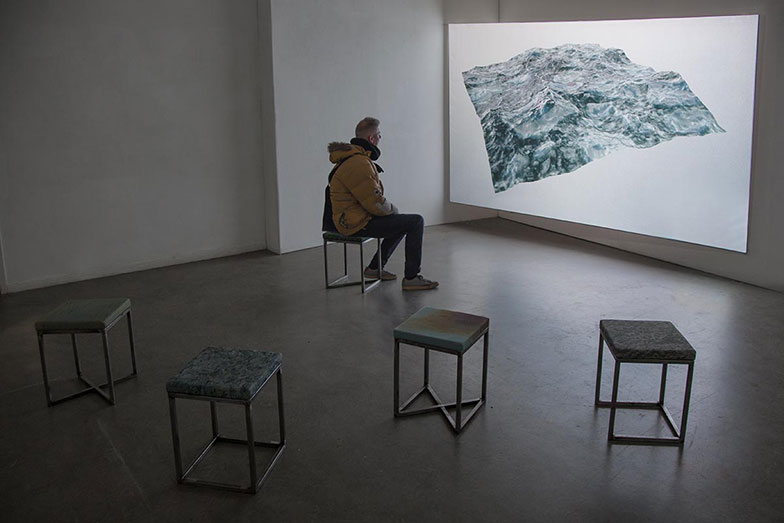
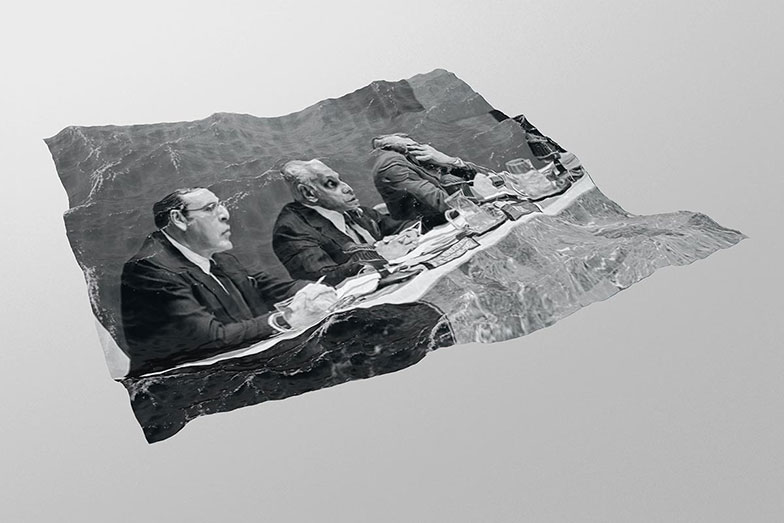
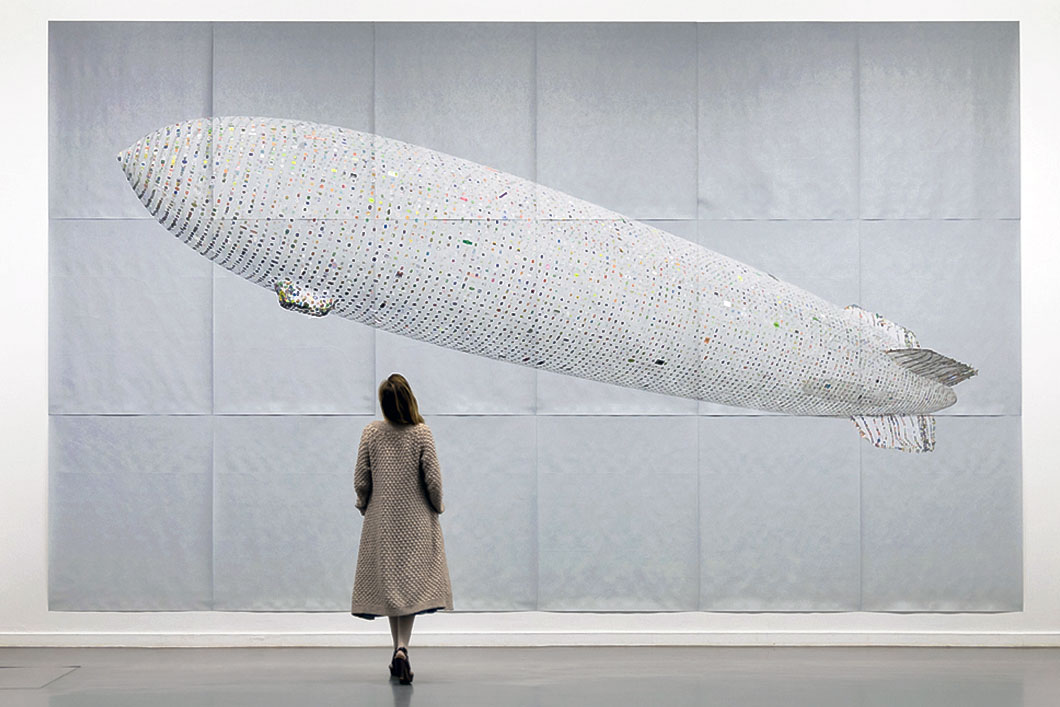
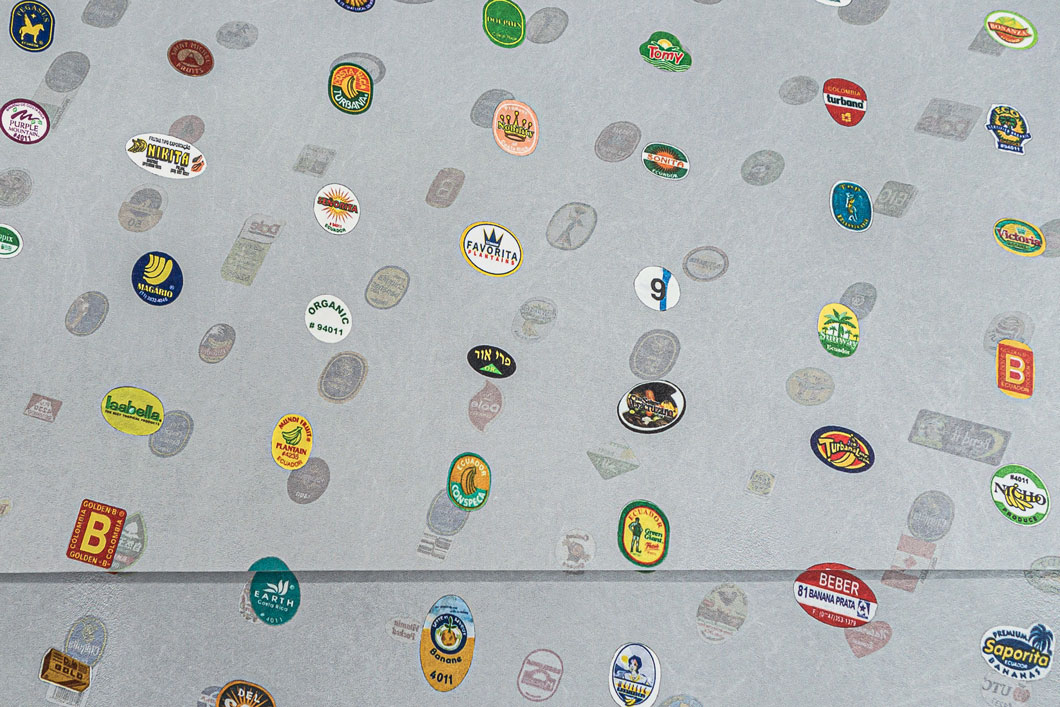
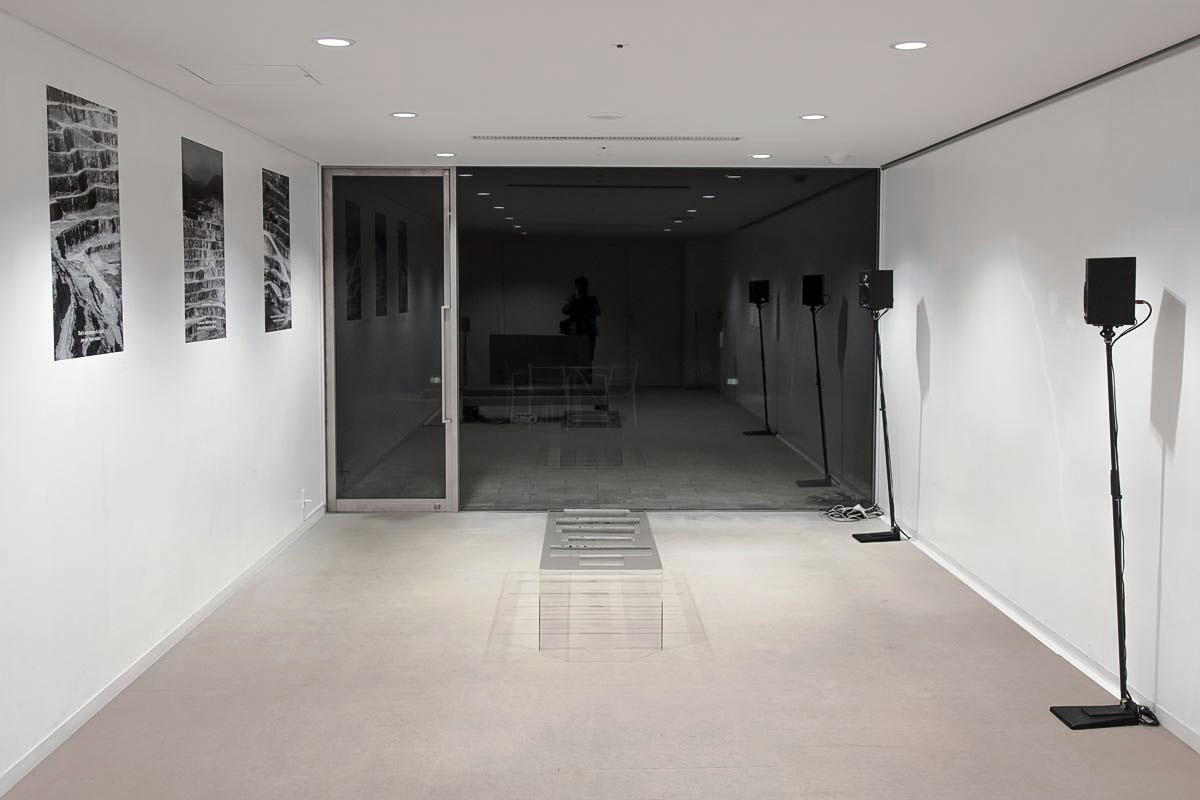
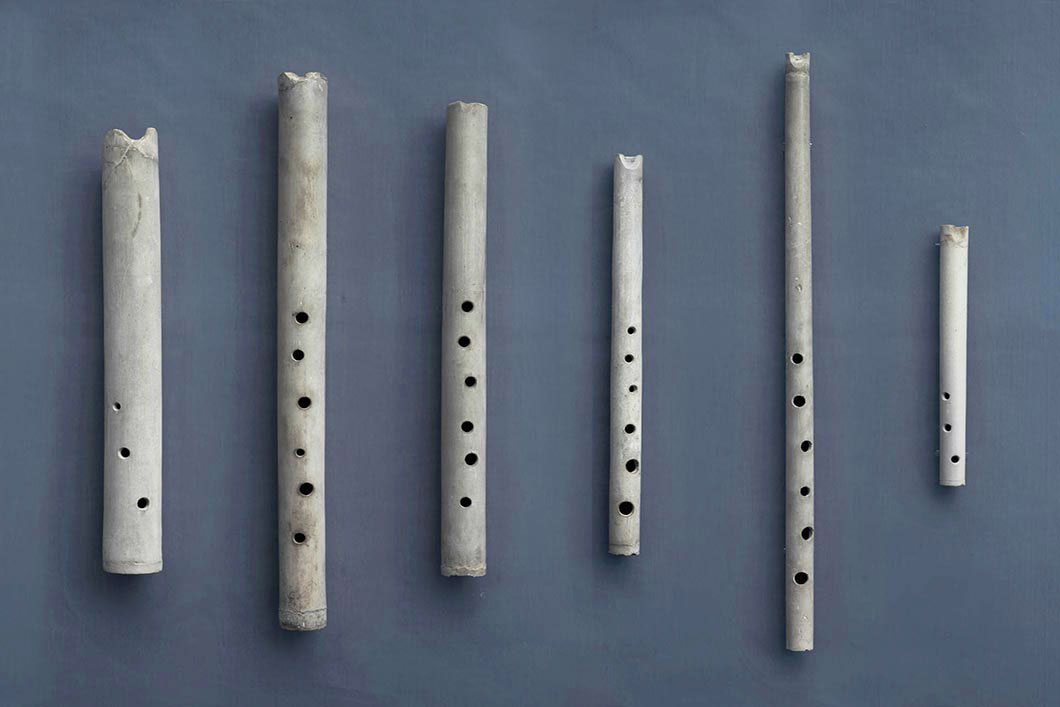
by Anke Bangma: Introduction to the exhibition Customs & Claims, TENT, Rotterdam 2017
by Damien Simon: press release for The Ripple Effect: Kokin (…) Slendro, 2021
by Marianna Maruyama: DAI Embassy, 2017
by Rachel Carey: Ideas are like Weather Maps, catalogue LEAP, 2015
by Hélène Meisel: on The Alpine Pride, 2012
by Petra Reichensperger: on the work of Julien Grossmann, 2011
by Damien Simon: press release for The Ripple Effect: Kokin (…) Slendro, 2021
by Marianna Maruyama: DAI Embassy, 2017
by Hélène Meisel: on The Alpine Pride, 2012
by Petra Reichensperger: on the work of Julien Grossmann, 2011